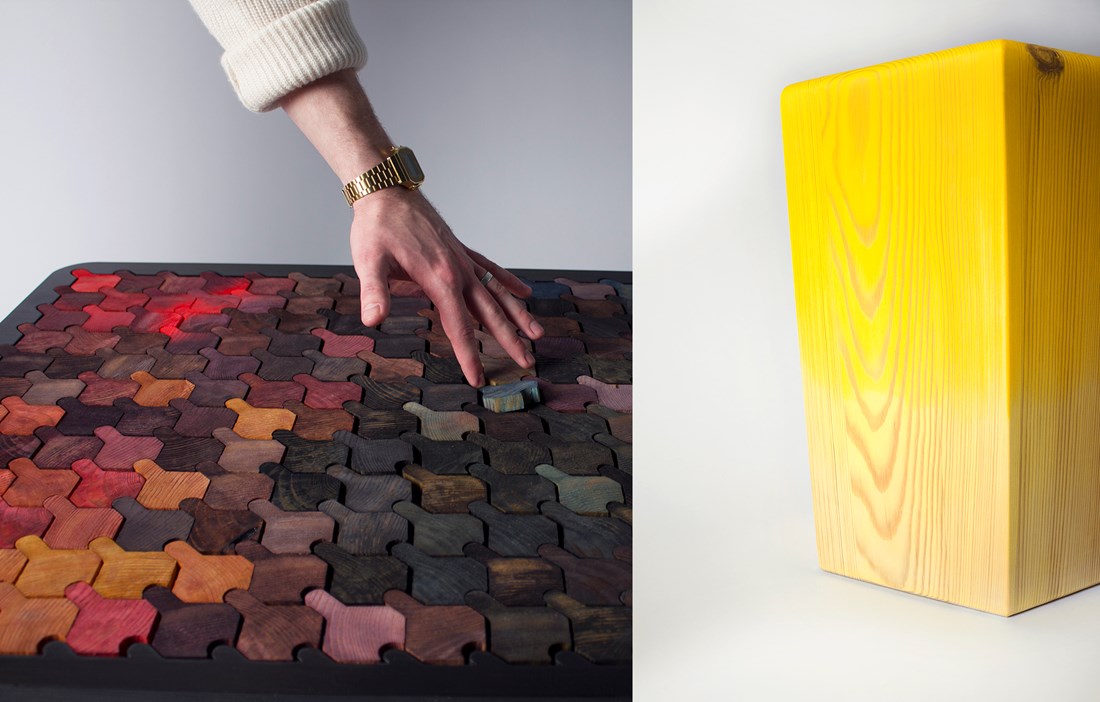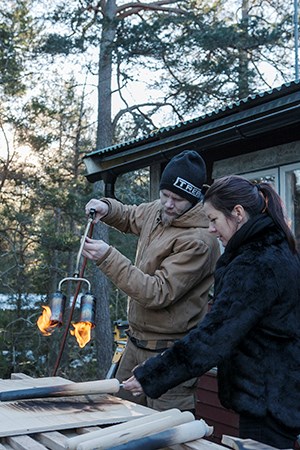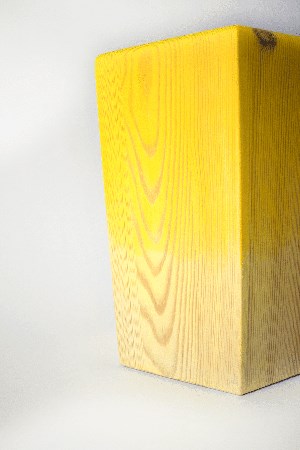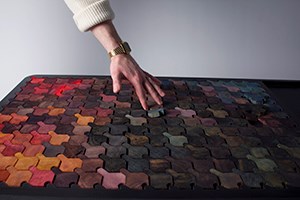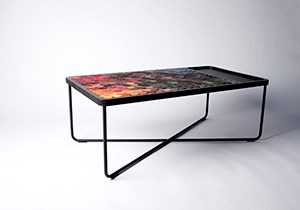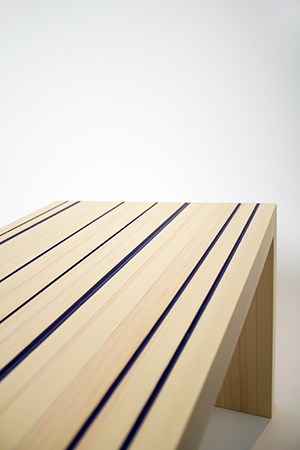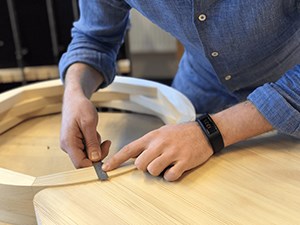Sweden has plenty of pine. We also have sustainable forestry based on the principle that every harvested tree is replaced with two new seedlings, which makes Swedish pine a sound and sustainable choice of material. It is also a material that can be used to create so many different looks, which only adds to the interest in pine. In the run-up to the Stockholm Furniture & Light Fair, Swedish Wood has chosen to showcase the potential of pine by securing collaborations with designer Lisa Hilland and the final-year students on the design programme at Carl Malmsten Furniture Studies, amongst others.
“We want to show people what an innovative material pine is, and satisfy the curiosity that we’re noticing among designers and interior architects. There’s a huge appetite for more knowledge about the material. We’re also interested in seeing how creatives with different experience can design exclusive pine furniture with a whole new look. With the contacts and information we have available, we’re able to provide both advice and inspiration,” says Björn Nordin from the industry body Swedish Wood.
At the Stockholm Furniture & Light Fair, Lisa Hilland is launching her new design range Mylhta, which includes several pieces of furniture in pine. She has employed techniques such as Shou Sugi Ban and scorched pine, and has also designed tables and chairs with a veneered pattern in pine that shows off the grain of the wood in an innovative way.
“My aim for Mylhta is to combine design, quality and sustainability, and so pine felt like the obvious choice for the furniture. I also wanted to explore different ways of refining pine to produce more exclusive furniture, which included experimenting with new finishes. Swedish Wood has provided valuable advice along the way,” comments Lisa.
Also at the trade fair, students on the design programme at Carl Malmsten Furniture Studies will be presenting the exhibition ‘The Pine Manifesto’ in conjunction with Swedish Wood and Blå Station. Swedish Wood has contributed know-how as well as top quality pine from the forests of Dalarna in central Sweden. The exhibition comprises around 10 items of furniture and accessories made from pine, all looking unusually different.
“Since the whole of society needs to change and become more sustainable, I see pine as an important ‘sustainable’ material of the future. Even our politicians are talking about the green gold that we grow so abundantly in Sweden. I’m part of the generation that had to suffer through far too much brown pine as a child, so it was never going to be the go-to choice. That’s why I wanted to challenge the students to make this wood a little sexier, and I must say they’ve done an incredible job. In my view, many of the projects have the potential to be put into production, which was another aim of this task,” explains Johan Lindau from designer furniture maker Blå Station, who was the driving force behind the product brief and also the project manager, along with Chandra Ahlsell from Folkform.
About Lisa Hilland:
Lisa Hilland is a designer with extensive experience, who has previously collaborated with illustrious Swedish companies such as Gärsnäs, Gemla, Orrefors and Svenskt Tenn. Lisa trained at Central Saint Martins College of Art and Design in London and has run her own design agency since 2005. She has won multiple prizes, including the Lauritz Icon Award in 2017 for her Bow furniture series, developed in collaboration with Gemla.
About Carl Malmsten Furniture Studies:
As part of Linköping University ,Carl Malmsten Furniture Studies is one of the few institutions to offer university programmes with a strong focus on craft. The school offers undergraduate programmes in Cabinetmaking, Furniture Design and Furniture Upholstery, with the design course focusing on production and the craft programme on fine joinery and high-end furniture.
About Johan Lindau and Blå Station:
Johan Lindau is the owner and head of Blå Station, the design company established in 1986 by designer Börge Lindau. The original aim was to produce furniture that the designers themselves liked and felt had a rightful place in the market. This approach has now been handed down and is still going strong.

